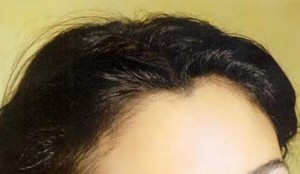Creating a Natural Looking Hairline for Women
Thursday, October 1st, 2009 In a recent article published in Dermatologic Surgery Journal, Dr. Nausbaum et Al discusses naturally occurring female hairlines. His study was based on a large panel of normal women for the purpose of comparing and contrasting hairline variables to attain the perfect female hairline. Given that male hair restoration has almost always been the focus of hair restoration this new information can help benefit women who are candidates for hair transplant surgery.
In a recent article published in Dermatologic Surgery Journal, Dr. Nausbaum et Al discusses naturally occurring female hairlines. His study was based on a large panel of normal women for the purpose of comparing and contrasting hairline variables to attain the perfect female hairline. Given that male hair restoration has almost always been the focus of hair restoration this new information can help benefit women who are candidates for hair transplant surgery.
The author came up with a guide or type of blueprint to help determine the best hairline for a woman. This guide was based on the average recorded parameters in women with healthy, non-balding hair. Among a panel of 360 women, the most dominant feature found in 81% of the women was in fact the presence of the widow’s peak. In addition, around 90% of these women also showed lateral mounds.
It’s great to know that there is now a bigger emphasis in hair restoration for women with more viable information and techniques to help solve their hair loss. Our hair transplant surgical offices already specialize in female hairline reconstruction in women suffering from female patterned hair loss or male patterned hair loss. This technique has also been applied on transgender (male to female) patients to help soften and alter their masculine features.
We at our California offices of US Hair Restoration perform transgender hair transplants regularly and I personally believe that hair restoration is one of the most key procedures in sex reassignments process for transsexuals.

